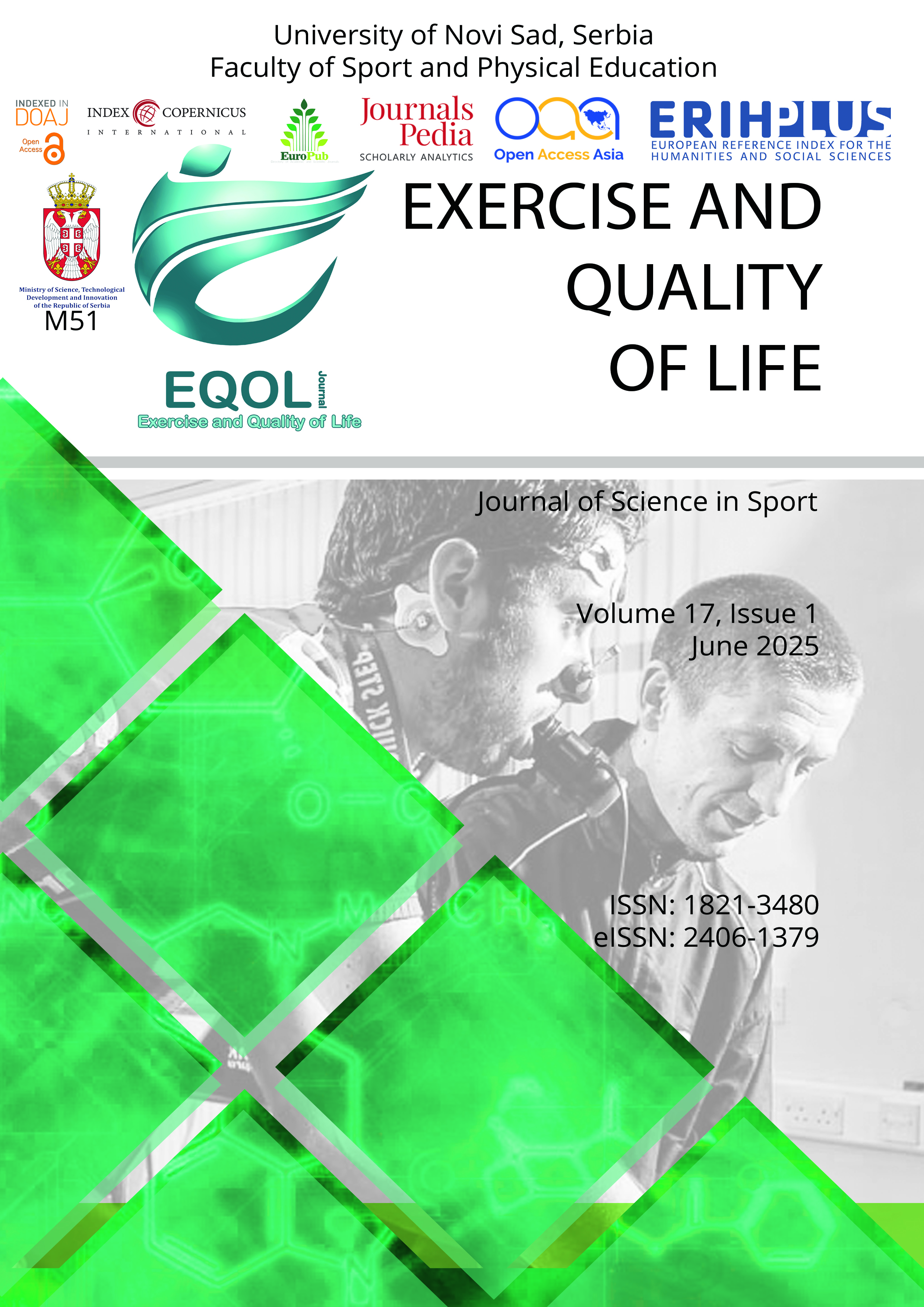Current issue

Volume 17, Issue 1, 2025
Online ISSN: 2406-1379
ISSN: 1821-3480
Volume 17 , Issue 1, (2025)
Published: 15.06.2025.
Open Access
All issues
Contents
20.06.2023.
Original scientific paper
Motor competence of children with different levels of physical activity
Adequate development, testing, continuous motor competence monitoring and physical fitness are very important factors in the development of children aged 7 to 10. The purpose of this study was to determine the differences in the motor competence of the children engaged in organized physical activities in sports clubs and the children who were not included in any kind of organized physical activity. The study included 119 children, 57 children engaged in organized activities in sports clubs (age: 8.44 ± 0.78; height: 133.17 ± 7.21; weight: 31.96 ± 7.73 BMI: 17.9 ± 3.38) and 62 children who had no additional organized physical activity (age: 8.43 ± 0.84; height: 134.85 ± 7.60; Weight: 34.44 ± 9.20 BMI: 18.7 ± 3.68). Motor competence was assessed by the Kiphard-Schilling body coordination test (KTK). After adjusting for age, gender, and BMI effects, we found small to medium significant mean differences (p<0.05, d [95%CI]) between the groups in hopping for height tests (d=0.78 [0.41, 1.16]), jumping sideways (d=0.79 [0.42, 1.17]), moving sideways (d=0.68 [0.32, 1.06]), and walking backward (d=0.44 [0.07, 0.81]). The results have shown that the children who were engaged in organized physical activities in sports clubs have a higher level of motor competence than their peers who were not included in the organized system in sports clubs. The authors strongly suggest that teachers, educators, coaches, and parents should encourage and include children in organized systems of physical activity, i.e., training processes in sports clubs.
Gojko Škundrić, Draženka Mačak, Snežana Damjanović, Boris Popović
11.12.2022.
Original scientific paper
Hip-hop from dancers’ viewpoint: Dance, lifestyle, and/or subculture?
The paper presents the results of field research on the population of dancers – members of the hip-hop community who are “contestants” in battles. The field research was carried out in April 2022 on a sample of dancers aged 17 to 40 (N = 31). The research results indicate that the hip-hop community in Serbia is small, but that such battles in specific forms contribute to the community’s maintenance and expansion. Battles also play a significant role in the progression and expression of dancers as individuals. Dancers consider hip-hop to be not only an art form but much more, hip-hop is synonymous with a lifestyle and a “way of looking at the world” for dancers. Although the research was carried out on a small sample, it represents the author’s pioneering contribution to a deeper understanding of the hip-hop community in Serbian society. It also indicates the need to carry out compatible research in the future.
Snežana Damjanović, Boris Popović, Ivana M. Milovanović, Tijana Šćepanović























